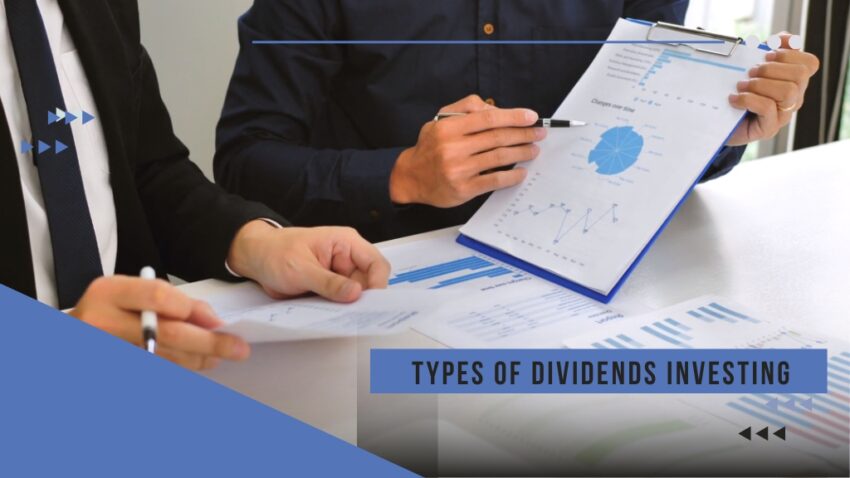Investors use the terms dividend yield and total return to gauge a stock’s performance over a specific time frame, typically one year. However, these terms represent distinct forms of performance. The debate over whether equity investors should prioritize generating income, which includes dividend yield or overall return, is a contentious issue in the financial industry.
One approach to managing your portfolio is to prioritize generating income and dividends, also known as “income investing.” Another approach is to sell assets as needed to cover expenses. While these two strategies are essentially the same for the portfolio itself, there is a distinction to be aware of from your own perspective. Specifically, focusing on income investing may result in a less diversified portfolio.
When examining a company’s dividends, potential investors closely consider various details, including the ex-dividend date. If you are interested in becoming a professional investor, you can find more information on stockmarketeye.com.
However, it is highly important to understand that the significance of each measurement can vary depending on your personal situation and investment goals. It’s not necessary to prioritize one over the other. Instead, it’s better to take both into account when deciding on an investment.
Income Investing

When it comes to income investing, the goal is to generate the necessary income through interest and dividends within your account. This approach is preferred by some people as it is perceived to avoid depleting the principal amount, as they are not selling off any shares.
Total Return Investing

Investing for total return is based on the concept that the money in your investment accounts can be used interchangeably. Whether you use money from dividends, interest income, or securities sales, it doesn’t matter. This allows you to concentrate on creating the best portfolio without being concerned about the yield generated by your investments.
When You Choose Income Investing, You Give up Control of Your Income
When you focus on generating dividends with your equity portfolio, you relinquish control over your spending. Although dividend rates tend to be less volatile than capital gains, they still fluctuate with the overall economy, especially during tough times. You are subject to the decisions made by your portfolio company’s board of directors.
If your portfolio distributes fewer dividends in a given quarter, you will have less money to spend the following quarter.
Your Principal Is Not Untouched by Income Investing
Many people are attracted to income investing due to the belief that it is a safer option as the principle remains untouched and the number of shares remains constant. However, if you delve deeper into what a stock actually represents – a small portion of ownership in a company and its future cash flows – this way of thinking can be misleading. The distribution of dividends can result in a decline in the share price of the stock.
Let’s say a company’s expected future cash flows, or share price, was $100. If the company distributes a $5 dividend, the share price will decrease to $95 after accounting for market changes. The $5 dividend goes to the shareholders, and the company no longer has that amount. Whether you use income investing or total return investing to meet your spending needs, the money ultimately comes from the same source.
Therefore, it’s just a matter of terminology. For example, if the expected future cash flows from a company (in other words, the share price of the company) were $100, and then it distributed a $5 dividend, the share price would fall to $95 after you control for market movements. The company no longer has that $5 since it distributed it to the shareholders. You just got that part of the expected future cash flow.
In other words, whether you are meeting your spending needs from income investing or total return investing, it’s an exercise in semantics – the money is coming from the same place.
The Importance of Dividend Yield
When a company distributes a portion of its profits to shareholders, it’s called dividends. Paying dividends is a sign of a company’s financial health and confidence, regardless of the share price. The dividend yield is a financial ratio that shows the dividend income per share divided by the price per share.
Dividends can be a valuable tool for long-term investors as they can be reinvested to purchase more shares, allowing investors to increase their equity holdings without committing additional resources.
Additionally, some investors rely on dividends to generate a steady stream of income from their investments. While not as dependable as fixed-income investments like bonds, stocks that produce dividends can still be quite beneficial in this regard.
Yield can be deceiving. Certain companies may offer yields even when they’re experiencing a short-term loss, while others may payout yields too quickly and not invest enough profit to maintain operations in the future.
The Importance of Total Return

The total return of investment is a simple way to show how much profit a shareholder has made. Unlike the dividend yield, which only considers cash dividends, the total return includes interest, dividends, and any increase in the share price, as well as other capital gains.
At first glance, this seems like a better way to measure performance than just looking at the dividend yield. However, returns are only based on past performance, and share prices can go up for various reasons. Predicting future investment performance based on returns is usually more challenging than using the stock’s dividend yield.
Which Is More Important?
The significance of investment factors depends on the individual investor’s goals. For those focused on determining which stocks have performed better over a specific time frame, total return holds more importance than dividend yield. However, for investors relying on consistent income from investments, dividend yield is the more crucial factor to consider.
If your investment horizon is long-term and you intend to hold a portfolio for an extended period, it is advisable to concentrate on total return. Nevertheless, when it comes to assessing a company for potential equity investment, it is never wise to rely solely on these two indicators.
Instead, scrutinize the company’s balance sheet and income statement, and conduct further research to make an informed decision.
It Is Beneficial to Diversify Your Portfolio

The difference between income investing and total return investing lies in portfolio construction and diversification, as they both generate income from the same source. With income investing, you focus on building your portfolio around stocks that pay dividends. However, it is important to note that these stocks differ from the overall market.
In summary, solely concentrating on dividends and income generated by your portfolio is not a sensible approach. It is essentially the same as total return investing and can even harm your portfolio. It is important to concentrate on factors that you can actually control, such as taking appropriate risks and diversifying your investments as much as possible.
These are the key factors that will help you achieve a successful retirement rather than relying on strategies such as income investing.











